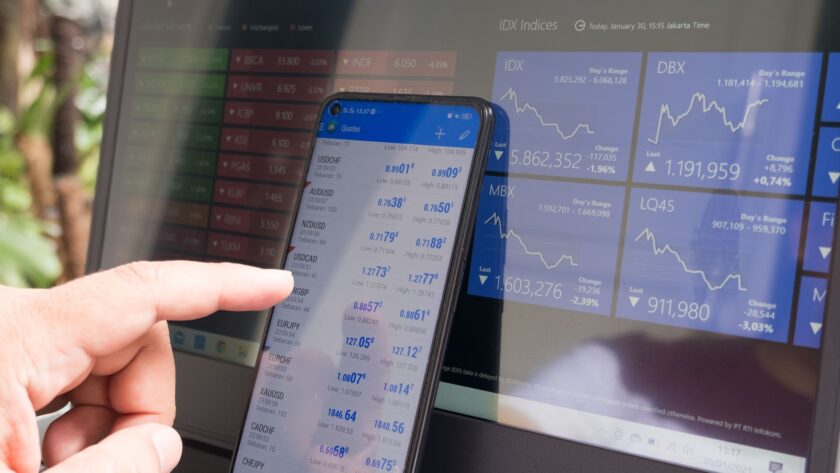By engaging in forex trading, you have the chance to participate in a hugely promising worldwide market. Forex has even developed a reputation for making quick gains due to its appeal among day traders. In actuality, it’s as intricate and fiercely competitive as any other global market. You must comprehend the market and fine-tune your trading technique if you want to succeed and succeed regularly.
There are many different approaches to trading forex, including taking advantage of a platform like FTUK, which is the global centre for instant forex funding, to keep trading and make profit. So it’s crucial to pick one that fits your degree of experience, your objectives, and the situation at hand. To assist you in finding the right fit, here are four competitive strategies in forex trading with their fundamentals, advantages, and disadvantages that will work in 2023.
Range Trading
Support and resistance serve as the foundation for range trading. The highest and lowest point the price hits before turning in the opposite direction is known as the support and resistance levels on a price action graph. These support and resistance levels come together to form a trading range with brackets.
A stair-like support and resistance pattern is formed in a trending market when the price keeps breaking through previous resistance levels and making higher highs in an uptrend or lower lows in a downtrend.
However, the price moves in a sideways pattern and stays confined to pre-established support and resistance thresholds in a range market. To track the price ranges, traders are skilled in copying signals from Telegram to MT4 to be aware of fluctuations so that they can decide which trading option is better.
Traders anticipate a reversal in the opposite direction and sell when the price reaches the overbought (resistance) level. Similarly, it is a buy signal when the price approaches the oversold (support) level. Finally, if the price moves outside this set range, it can signal the beginning of a new trend.
Range traders are more interested in markets that swing between support and resistance levels without trending in one direction for an extended period than in predicting breakouts, which often occur in trending markets.
Pros and Cons
Trading the peaks and valleys of range markets can be a reliable and profitable tactic. There is also less inherent risk because traders are trying to profit from the existing trend rather than trying to foresee it. However, time is incredibly crucial. An asset will frequently stay overbought or oversold before turning to the other side. Traders should hold off on opening a new position until the price reversal can be verified to shoulder less risk.
Position Trading
Using the position trading technique, traders hold their positions for an extended length of time, ranging from a few weeks to a few years. When used as a long-term trading strategy, this method calls for traders to maintain smaller market movements that oppose their position.
In order to successfully implement this strategy, traders must have access to reliable and efficient sources of traders such as TopBrokers Forex brokers who can provide them with the necessary tools, resources, and support to make informed trades. Forex brokers play a crucial role in the success of traders by providing access to the latest market news and analysis, a wide range of trading platforms, and the ability to execute trades quickly and efficiently. By partnering with the right Forex broker, traders can maximize their chances of success and achieve their long-term trading goals.
Pros and Cons
Position trading’s success or failure depends on the trader’s knowledge of the relevant market and their capacity for risk management. Some position traders utilize a target trading strategy to lock in profits at regular intervals (so limit prospective losses).
Scalping
Scalping is a kind of intraday trading in which traders buy and sell currencies intending to make tiny profits on each transaction. Scalping tactics in forex are frequently built on a continuous analysis of price movement and understanding the spread.
A scalper purchases a currency at the current ask price, expecting the price to increase sufficiently to cover the distance and generate a little profit. However, for this method to work, they must wait for the bid price to exceed the initial ask price before flipping the currency before the market swings.
Pros and Cons
Earning a few pennies in every trade adds up to a sizable sum if you make a few daily trades. However, managing such a vast number of trades has its own difficulties. Managing many trades increases complexity for any trader.
The stakes are higher in a market that is this volatile and dynamic. Success as a day scalper takes steadfast focus, calm nerves, and perfect timing. A trader risks missing their (already small) profit window and depleting their resources if they hesitate to purchase or sell.
Swing Strategy
The goal of swing trading, a trend-following approach, is to profit from sudden spikes in price momentum. These smaller spikes and falls may defy the direction of the dominant trend, necessitating a more constrained market outlook (examining 15-minute, hourly, daily, and weekly price charts instead of analyzing overall market trends).
Swing trading is often preferred by day traders who are accessible to watch changes in price momentum minute by minute since it requires quick response and tight market control. Although it is considered a short-term trading strategy, this method requires traders to hold their position overnight (unlike day trading) and may keep them in a trade for a few weeks.
Pros and Cons
Swing trading expects quick price movement over an extensive price range, two characteristics that point to a high likelihood of success. However, higher potential rewards always come with more risk. Swing traders must be ready to move instantly when the momentum changes because price momentum can change quickly and without notice. Swing traders will frequently cap their position size to reduce the dangers of holding it overnight.
A smaller position size reduces their profit margin, but it eventually guards against experiencing significant losses.
Conclusion
Every tactic has particular advantages and disadvantages uniquely. It’s crucial to consider experience and situation as you decide which strategy to adopt. Day trading techniques that demand prompt action and call for managing numerous trades at once may not be the best environment for learning if you’re new to forex.
Instead, choose a more straightforward, longer-term approach that will allow you the time necessary to understand technical analysis, put prudent money management into practice, and evaluate your performance. Not every trader benefits the most from every technique.





